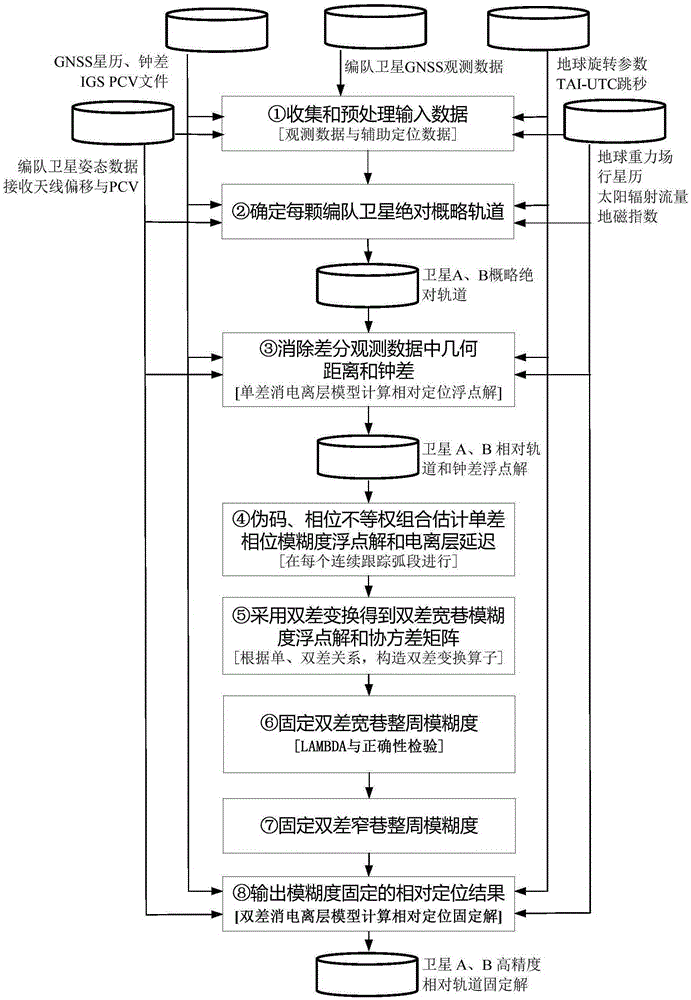Long baseline satellite formation GNSS relative positioning method based on ambiguity fixing
A technology with fixed ambiguity and relative positioning, which can be used in satellite radio beacon positioning systems, radio wave measurement systems, measurement devices, etc., and can solve the problem of low relative positioning accuracy.
- Summary
- Abstract
- Description
- Claims
- Application Information
AI Technical Summary
Problems solved by technology
Method used
Image
Examples
Embodiment Construction
[0088] The present invention will be further introduced below in conjunction with the accompanying drawings. Taking the GNSS relative positioning of the GRACE satellite formation as an example, the inter-satellite distance of the formation in January 2006 was about 140 kilometers, which is a typical long-baseline satellite formation. The in-orbit measurement data of 7 days from February 1 to 7, 2006 were selected. Such as figure 1 As shown, a kind of ambiguity fixed long baseline satellite formation GNSS relative positioning method of the present invention comprises the following steps:
[0089] In the first step, the input data is collected and preprocessed.
[0090] Collect observational data from satellite platforms and ancillary data from websites (see Table 1). Preprocess the GNSS observation data of the 7-day GRACE satellite formation, mark outliers and cycle slips, save the preprocessed daily data in the form of text files, and output the preprocessed GNSS observation...
PUM
 Login to View More
Login to View More Abstract
Description
Claims
Application Information
 Login to View More
Login to View More - R&D
- Intellectual Property
- Life Sciences
- Materials
- Tech Scout
- Unparalleled Data Quality
- Higher Quality Content
- 60% Fewer Hallucinations
Browse by: Latest US Patents, China's latest patents, Technical Efficacy Thesaurus, Application Domain, Technology Topic, Popular Technical Reports.
© 2025 PatSnap. All rights reserved.Legal|Privacy policy|Modern Slavery Act Transparency Statement|Sitemap|About US| Contact US: help@patsnap.com



